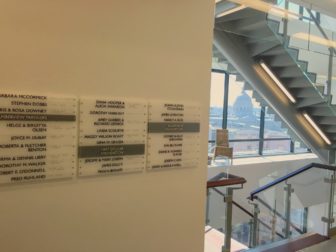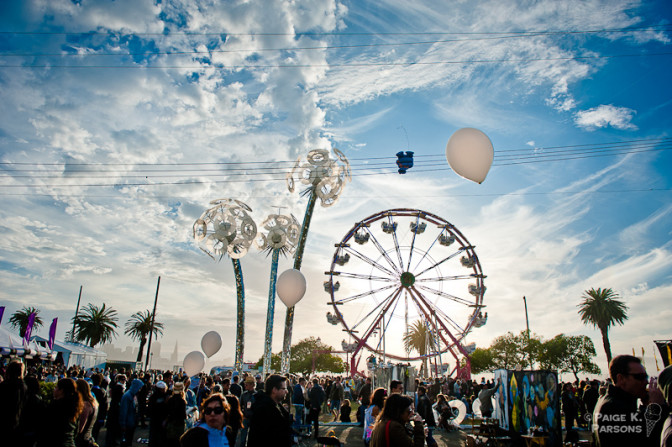Burning Man has ten tenets — perhaps the first and foremost being “radical inclusion”. On their website, the first principle reads, “Anyone may be a part of Burning Man. We welcome and respect the stranger. No prerequisites exist for participation in our community.”
It’s a philosophy that we share at LightHouse, and one that led MAD Lab designer and longtime Burner Julie Sadlier to debut a one-of-a-kind tactile Burning Man map two years ago. In other words, a Burning Man map for blind people .
This year, we’ve updated and improved the hybrid tactile-visual map for Burning Man 2017. We were able to complete the maps without a problem. The maps, with updated art placement, will be available at several locations in Black Rock City, including the Playa Information Booth, Mobility Camp and the CBT Project (at 7 and Fire), and here at the LightHouse headquarters starting August 23. To pre-order a map, contact our Adaptations Store at 1-888-400-8933 or adaptations@lighthouse-sf.org.
Calling it “awesome, no matter your level of sight,” The Atlantic’s CityLab aptly pointed out that you don’t have to be blind to use our map. Complete with braille, visual, and tactile representations of the event’s streets, information booths, first aid tents, restrooms, bus stops, camping, parking, and notable attractions such as artwork, Mobility Camp, The Temple and of course, The Man, the map is a great tool for anybody getting to know the festival – and one that is equally accessible to those with no vision. Now that’s radical inclusivity.
The map’s creator Julie Sadlier, said the response at Black Rock City over the last two years has been incredible, so much so that the leader of Mobility Camp, “Rat Lady”, contacted her way back in February to make sure she would be designing an updated version of the map for 2017.
“I had multiple people coming to my camp, even when I wasn’t there people were dropping off brailled business cards so they could talk more about the map,” says Julie. “Someone at Playa Information dismantled one copy and hung it on the wall to spread the word.”
It’s this type of openness and inclusivity, we’ve found, that opens unexpected doors and embodies the spirit of the LightHouse for the Blind as well as Burning Man. We look forward to printing even more than last year and to hearing your stories when you get back from the playa!
To get a copy of our map, call the Adaptations Store (1155 Market St., 10th Floor, San Francisco) at 1-888-400-8933, or email adaptations@lighthouse-sf.org. If you or your organization would like to design a fully accessible, inclusive map of, well – anything – email madlab@lighthouse-sf.org.

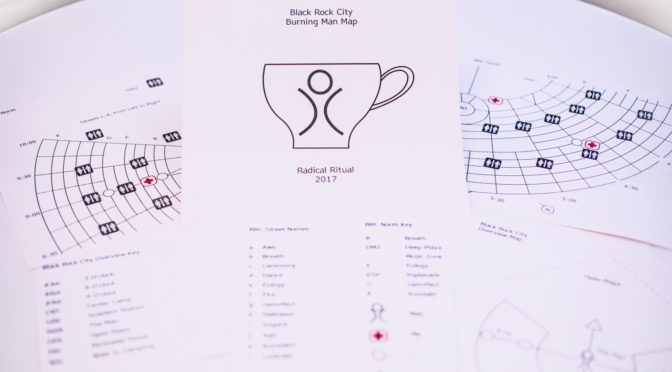
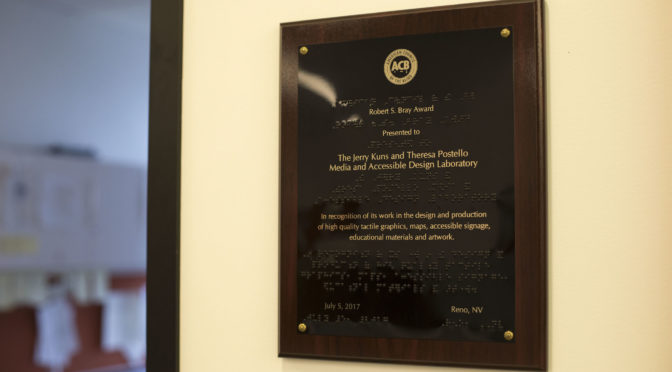
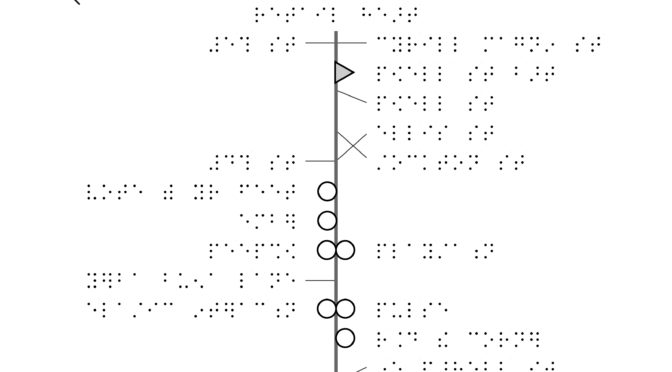

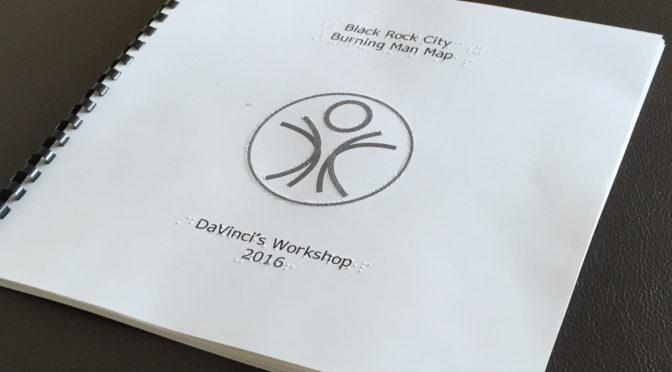
 Calling it “awesome, no matter you level of sight,” The Atlantic’s
Calling it “awesome, no matter you level of sight,” The Atlantic’s 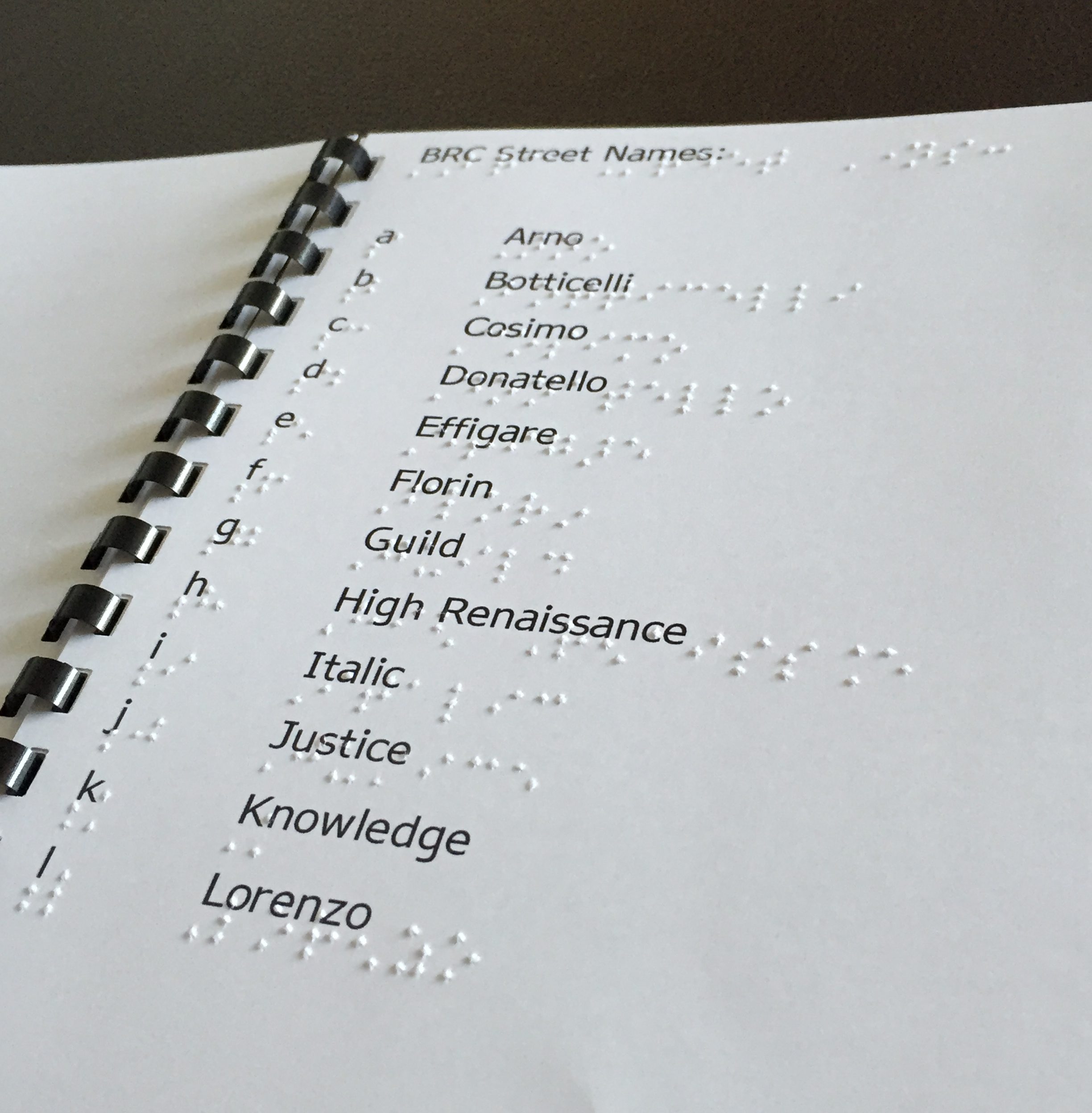 It’s precisely this type of radical inclusion, we’ve found, that opens unexpected doors and embodies the spirit of the LightHouse for the Blind as well as Burning Man. One member of Julie’s camp last year found himself stuck in a dust storm, taking refuge only to end up sitting at a bar next to a blind man he’d never met before. Without hesitation he pulled out of his pocket a souvenir: a little vile, embossed with braille, a signature of their camp. The man recognized the letters immediately and thus, a connection was made.
It’s precisely this type of radical inclusion, we’ve found, that opens unexpected doors and embodies the spirit of the LightHouse for the Blind as well as Burning Man. One member of Julie’s camp last year found himself stuck in a dust storm, taking refuge only to end up sitting at a bar next to a blind man he’d never met before. Without hesitation he pulled out of his pocket a souvenir: a little vile, embossed with braille, a signature of their camp. The man recognized the letters immediately and thus, a connection was made.

